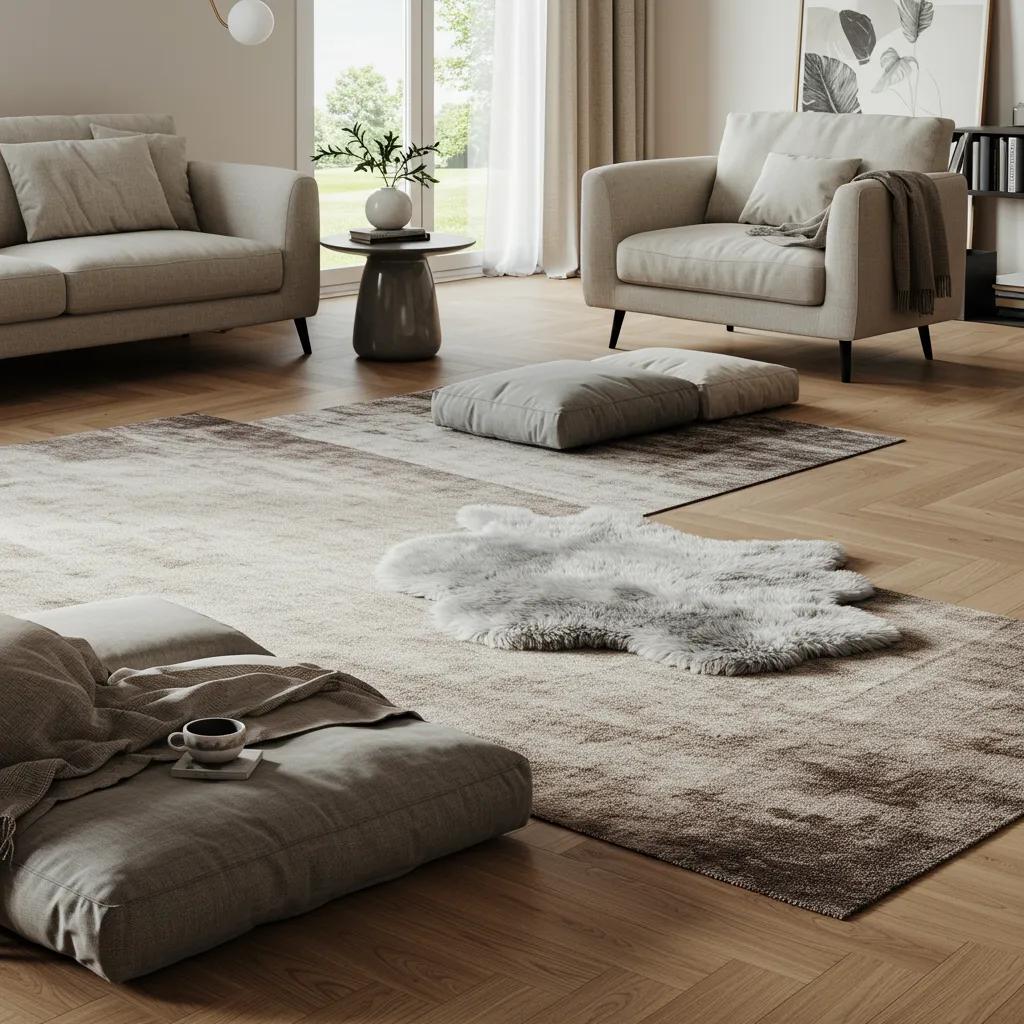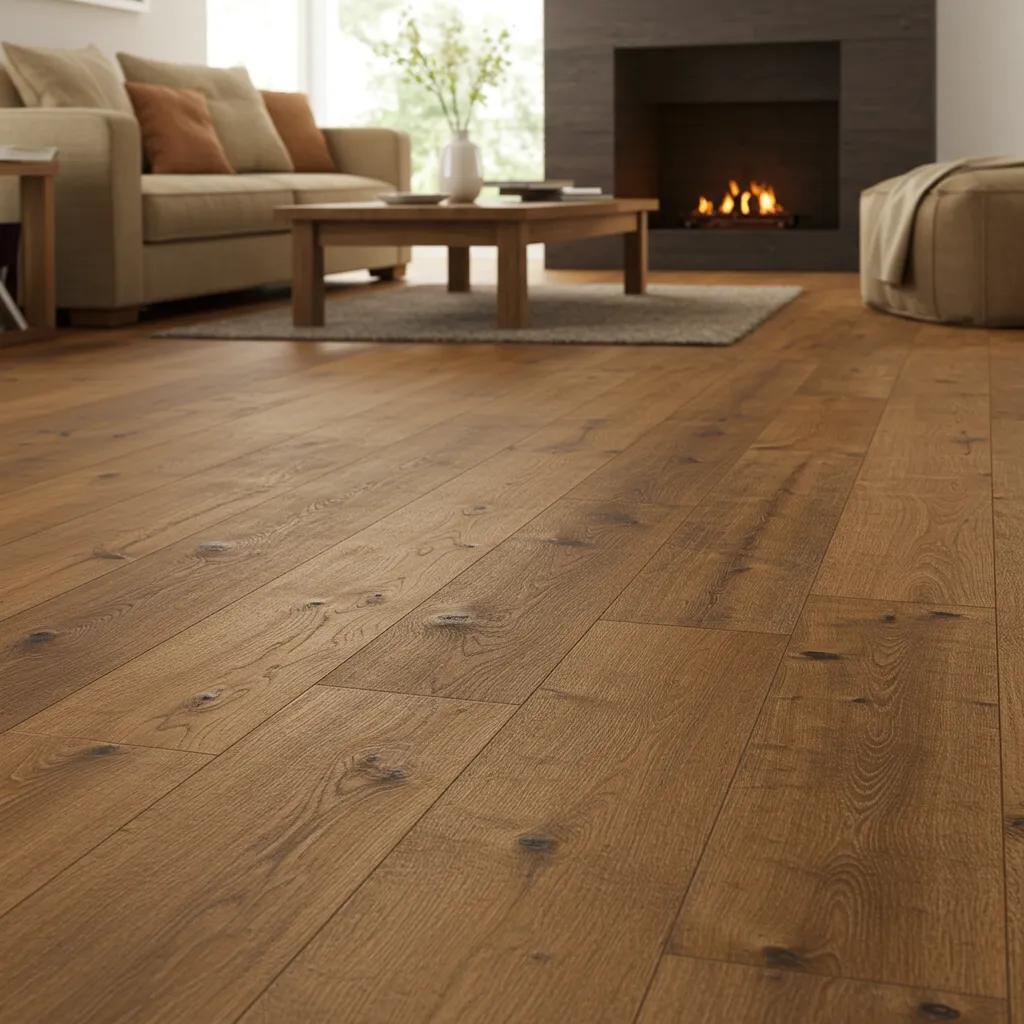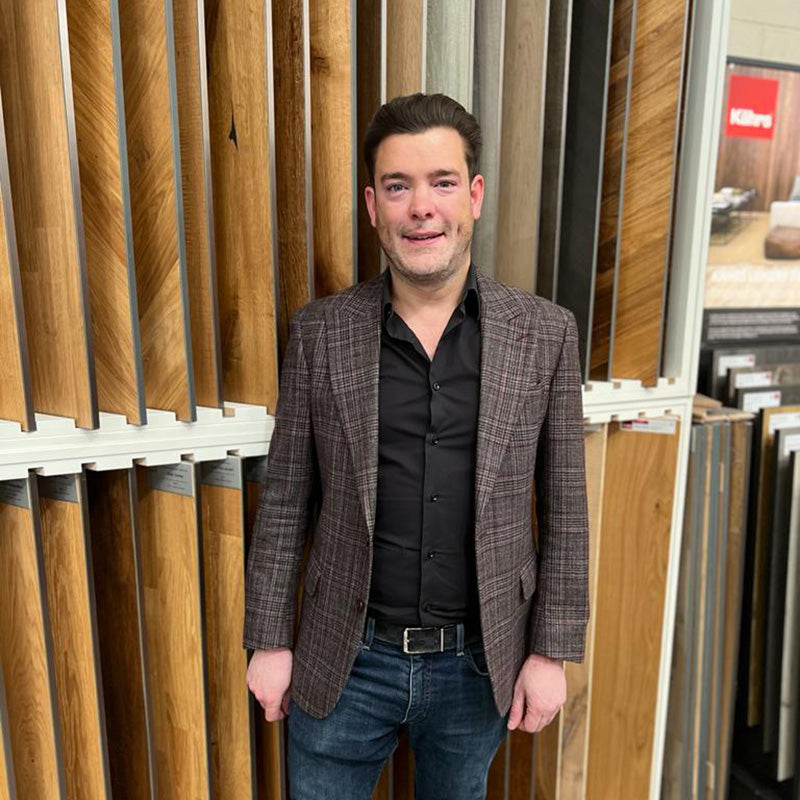The Neuroscience of Comfort: Why Some Floors Feel ‘Right’ Underfoot

Choosing the right flooring finish balances protection, appearance, and long-term cost, so understanding how finishes work is essential before you specify or buy wood floors. A flooring finish is the surface treatment applied to timber to protect it from abrasion, moisture, and staining while influencing sheen, pore expression, and tactile texture. This guide explains the main categories — surface (film-forming) and penetrating (oils) — and surveys common finishes including hardwax oils, water- and oil-based polyurethanes, UV-cured systems with aluminium oxide, moisture-cured and acid-cured options, plus brushed/textured and traditional waxes. You will learn how finishes differ in durability, maintenance, and indoor air quality, with room-specific recommendations for kitchens, bathrooms, and high-traffic areas. Practical application and maintenance steps are covered so you can assess lifecycle costs and make confident choices for family homes, pets, and busy households. The article also includes quick-reference lists and comparison tables to help you spot the most suitable finish for your project.
What Are the Different Types of Wood Flooring Finishes?
A finish on wood flooring either forms a surface film that sits above the timber or penetrates the wood to protect from within; each approach produces distinctive aesthetics and repair behaviors. Surface finishes include lacquers and polyurethanes that create a protective film and often score well for abrasion resistance. Penetrating finishes such as natural oils and hardwax oils soak into pores to enhance grain and produce a more tactile, matte result while allowing easier local repairs. Understanding the category helps you select finishes that match desired sheen, pore expression, and maintenance willingness. Below are the common finishes with concise definitions to aid quick comparison.
The main types of wood flooring finishes include:
- Oiled finishes (natural oils / hardwax oils): Penetrating treatments that highlight grain, offer matte looks, and allow spot re-oiling.
- Lacquered finishes (polyurethane, water- and oil-based, acid-cured): Film-forming coatings that provide strong abrasion resistance and multiple sheen levels.
- UV-cured with aluminium oxide: Factory- or site-cured coatings that lock in hard particles for very high durability and quick turnaround.
- Moisture-cured urethanes and acid-cured (Swedish) systems: High-performance film finishes used where long life is required.
- Wax and shellac: Traditional options that provide warmth but require frequent maintenance and are less water-resistant.
- Brushed / wire-brushed textures: Surface treatments that emphasize pore expression and aged character, typically followed by an oil or lacquer.
These short definitions orient the main trade-offs; the next sections explain how surface finishes differ from penetrating ones and what that means for appearance and repair.
How Do Surface Finishes Differ from Penetrating Finishes?
Surface finishes are film-forming coatings that create a continuous protective layer above the timber, whereas penetrating finishes soak into the wood fibers and form a more integrated, invisible barrier. Film-forming finishes, such as polyurethane and acid-cured lacquers, deliver higher abrasion resistance and are easier to clean with a damp mop, but they can hide pore expression and feel smoother underfoot. Penetrating oils emphasize grain and pore detail, produce a more natural matte look, and allow local touching-up with re-oiling rather than full sanding. The repairability difference means homeowners choosing oils accept a more hands-on maintenance rhythm but benefit from simpler spot repairs that preserve the timber's natural texture.
What Are the Key Characteristics of Oiled Finishes?
Oiled finishes penetrate and bond with surface fibers, enhancing grain contrast and often yielding a natural, low-sheen appearance that ages gracefully with use. Hardwax oils combine natural oils and waxes to give a degree of surface protection while keeping the tactile feel of wood; they are popular for engineered floors that seek a natural aesthetic with improved wear resistance. Oiled floors require routine cleaning and periodic maintenance: regular dry cleaning, occasional top-up oils for high-use areas, and more thorough re-oiling every few years depending on traffic. Their advantage is straightforward spot repair — scuffs can often be blended by re-applying oil locally without sanding the entire floor — which appeals to households willing to maintain that finish.
What Defines Lacquered Finishes and Their Variants?
Lacquered finishes are film-forming systems that build a continuous protective coating on top of the timber and include several variants such as water-based polyurethane, oil-based polyurethane, and acid-cured (Swedish) systems. Water-based polyurethanes dry clear with lower VOCs and retain pale tones better, while oil-based versions tend to amber slightly and offer robust film strength; acid-cured finishes form very hard films used in high-performance installations. Lacquered floors provide a wide range of sheen levels from matte to gloss and generally require less frequent surface maintenance than oiled floors, though deeper scratches usually need sanding and re-coating. Choosing between variants depends on desired sheen, VOC sensitivity, and willingness to accept eventual refinishing complexity.
What Is a Brushed Wood Finish and How Is It Applied?
A brushed or wire-brushed finish mechanically removes the softer springwood from the surface to accentuate the hardwood's grain peaks, creating a textured, tactile appearance that reads as rustic or characterful. The brushing process is performed before the main finishing coat and works best on species with clear, pronounced grain such as oak; it produces a patina that conceals light surface wear and provides a slip-friendly texture. After brushing, the floor is typically sealed with either an oil or a lacquer depending on whether the desired end result emphasizes natural pore expression or smooth surface protection. Brushed floors can collect grit in grooves, so careful vacuuming and gentle cleaning are essential to avoid accelerated abrasion of the raised grain.
Which Other Flooring Finishes Should You Know About?
Beyond the mainstream options, several specialized finishes are important to recognize for particular use-cases or budgets. UV-cured factory coatings with aluminium oxide embed hard particles in the surface for exceptional abrasion resistance and are common in prefinished engineered boards. Moisture-cured urethanes and acid-cured systems provide commercial-grade durability but require professional application and higher ventilation standards. Wax and shellac are traditional choices that offer warm patinas but demand frequent upkeep and are unsuited to wet areas. Each specialized finish has niche benefits: UV-cured systems for fast turnaround and heavy traffic; moisture-cured finishes for industrial resilience; wax for period restorations.
This overview sets the scene for a direct comparison between the two most common consumer choices: oiled and lacquered floors.
How Do Oiled and Lacquered Flooring Compare?

Oiled and lacquered floors differ fundamentally in protection mechanism, repairability, and aesthetic outcome, which drives suitability by room and lifestyle. Oiled finishes penetrate and preserve natural texture, allowing easy spot repair and re-conditioning, whereas lacquered finishes build a tougher film that resists abrasion but often needs professional sanding for deep repairs. VOC profiles and maintenance cycles also diverge: some lacquer variants (water-based) have lower VOCs, while certain oils and hardwax oil blends can be marketed as lower-VOC options. Understanding these trade-offs is essential when choosing between a natural, repair-friendly finish and a film-forming, hard-wearing surface for busy homes.
Intro to a detailed attribute comparison table of oiled versus lacquered finishes:
| Finish Type | Attribute | Typical Performance |
|---|---|---|
| Oiled (natural / hardwax) | Repairability | High — local re-oil and blending for scratches |
| Lacquered (polyurethane/acid-cured) | Durability | High — stronger abrasion resistance, resists staining |
| Oiled | Appearance | Natural, matte, emphasized pore expression |
| Lacquered | Maintenance | Low-frequency cleaning; deeper scratches need sanding |
This table summarizes key practical differences so readers can weigh priorities like ease of repair against raw abrasion resistance. The next paragraphs drill into durability, maintenance, and environmental impacts in more detail.
What Are the Durability Differences Between Oiled and Lacquered Floors?
Lacquered floors generally outperform oiled floors on raw abrasion resistance and impact protection because a continuous film shields the wood from direct contact with grit and spills. Oil finishes can show wear patterns sooner in very high-traffic zones, especially on smooth, light-colored species, but they offer the advantage of local rejuvenation by re-oiling worn areas. For hallways or commercial-style uses, film-forming lacquers — particularly UV-cured systems with aluminium oxide — are typically preferred for longevity. Assessing expected footfall and grit exposure helps decide whether a film finish or a penetrating oil better fits the durability needs of a space.
How Do Maintenance Requirements Differ for Oiled vs Lacquered Finishes?
Oiled floors require a defined maintenance rhythm: daily dry cleaning to remove grit, gentle damp cleaning with low-moisture techniques, and periodic top-up oils for worn sections; full re-oiling is often needed every few years depending on traffic. Lacquered floors need less frequent intervention and can be cleaned with pH-neutral products and minimal water, but when damage occurs it generally requires sanding and re-coating across larger areas. For DIY-minded households, oils permit straightforward spot fixes, while those preferring lower routine maintenance may accept the more involved repair path of lacquers.
The maintenance checklist for oiled floors includes:
- Daily dry cleaning to remove abrasive grit.
- Gentle damp mopping with manufacturer-approved cleaner.
- Periodic re-oiling of high-use areas and yearly inspections.
A summary: oiled finishes demand more regular care but allow simple spot repair; lacquered finishes simplify cleaning but concentrate maintenance effort when refinishing is necessary.
Which Finish Offers Better Aesthetic Appeal: Natural Look or Protective Film?
Aesthetic preference drives many finish decisions: oiled floors emphasize natural grain, pore expression, and a low-sheen, tactile finish that evolves attractively with age. Lacquered finishes produce a clearer surface look with selectable sheen levels from matte to gloss and a smoother feel underfoot, which can be desirable for contemporary or minimalist schemes. The choice often comes down to whether you prioritize a living, changeable patina (oiled) or consistent surface appearance and sheen options (lacquered). Photographic comparison and touch tests will clarify which aesthetic aligns with your interior design goals.
What Are the Environmental Impacts and VOC Levels of Each Finish?
VOC emissions and indoor air quality vary widely across finish chemistries; water-based lacquers typically present lower VOCs than traditional solvent-borne oil-based polyurethanes, while some hardwax oils and natural oil blends are formulated to reduce emissions. Acid-cured and moisture-cured systems can involve higher VOCs and require stricter ventilation during application. Choosing low-VOC alternatives and ensuring adequate ventilation during and after application reduces short-term IAQ impacts. For sensitive households, prioritize water-based film-formers or certified low-VOC oil blends where available.
What Are the Pros and Cons of Brushed Wood Flooring?

Brushed wood floors combine visual charm with practical concealment of light surface wear, making them attractive for rustic and contemporary schemes that value texture. The brushing process removes softer fibers and accentuates grain peaks, producing a tactile surface that hides minor scuffs and lends depth to finishes. However, grooves created by brushing can trap grit and require more vigilant cleaning routines; improper cleaning accelerates abrasion of the raised grain. For many homeowners, pairing a brushed texture with a durable finish — for example, a hardwax oil for easier local repairs or a robust lacquer for greater surface protection — balances aesthetic aims with practical longevity.
Below is a short pros/cons list to summarize performance and suitability:
Pros of brushed wood flooring:
- Enhances grain and creates a tactile, lived-in look.
- Camouflages light scratches and everyday wear.
- Works well with rustic, contemporary, and high-character interiors.
Cons of brushed wood flooring:
- Grooves can trap grit and require frequent vacuuming.
- Cleaning must be gentle to avoid damaging raised grain.
- May need a durable finish to resist deep abrasion.
In sum, brushed flooring is best for design-led spaces where texture and concealment matter, provided maintenance routines are accepted.
How Does Brushed Flooring Enhance Texture and Hide Imperfections?
Brushing selectively removes softer wood fibers, emphasizing the contrast between darker grain lines and lighter peaks and thereby creating a textured topography that visually disguises fine surface scratches. This mechanical alteration produces a surface that reads as aged and characterful while providing tactile interest underfoot. The technique works particularly well on oak and other open-grain species and is commonly followed by an oil or lacquer that complements the chosen aesthetic. Because small abrasions sit within the textured relief, they are less apparent than on smooth-sanded surfaces.
What Are the Maintenance Challenges of Brushed Finishes?
Brushed finishes trap grit in recessed channels, which can act as an abrasive if not removed regularly, so maintenance emphasizes frequent vacuuming, gentle brushing, and careful damp cleaning rather than aggressive mopping. Avoid abrasive pads or stiff brushes that could fray grain peaks, and use microfiber tools to lift dirt without abrading the surface. Routine inspections and spot treatments help preserve both texture and finish lifespan. These practices reduce the risk of accelerated wear from embedded particles.
For those planning purchases or refurbishments: To provide useful information and guide users to discover and purchase a wide range of flooring products at competitive prices, ensuring customer satisfaction.
What Are the Environmental and Health Considerations of Flooring Finishes?
Environmental and health considerations primarily revolve around VOC emissions, sustainability of raw materials, and indoor air quality during application and curing. Water-based polyurethanes generally emit fewer VOCs than solvent-based systems, while some natural oil and hardwax oil blends are formulated for lower emissions; however, performance and longevity considerations remain important. Acid-cured and moisture-cured systems can involve elevated VOCs at application and require strict ventilation protocols. Selecting low-VOC products and following ventilation guidance during installation reduces short-term IAQ impacts while ensuring long-term occupant comfort.
How Do VOC Levels Vary Among Different Finishes?
Typical VOC profiles rank water-based products lower than oil-based or solvent-borne alternatives, with acid-cured and moisture-cured systems often at the higher end during application. VOC range affects odor, drying time, and required ventilation; shorter curing times reduce downtime but can coincide with higher initial emissions. For sensitive occupants, select certified low-VOC products and schedule installations when the property can be ventilated adequately. Minimizing exposure during and immediately after application is the primary mitigation strategy.
| Finish Category | Typical VOC Profile | Mitigation Advice |
|---|---|---|
| Water-based polyurethane | Low | Good choice for lower IAQ impact; ventilate during application |
| Oil-based polyurethane | Moderate–High | Ventilate and limit occupancy during cure |
| Acid-cured / moisture-cured | High (during application) | Professional application and strict ventilation required |
| Natural oils / hardwax oils | Low–Moderate (varies) | Choose verified low-VOC formulations and allow curing time |
Which Finishes Are Considered Eco-Friendly and Sustainable?
Eco-friendly choices include water-based polyurethanes with proven low VOC ratings and certain hardwax oils or natural oil blends formulated for reduced emissions; sustainability also depends on sourcing of timber and transparency of manufacturer claims. Look for third-party verification and clear disclosure of VOC data rather than marketing buzzwords. The combination of low-VOC finishes and responsibly sourced engineered boards minimizes environmental impact while supporting healthier indoor air.
How Does Finish Choice Impact Indoor Air Quality?
Finish choice affects indoor air quality primarily during application and curing through off-gassing; long-term impacts depend on the product's formulation and emission profile. Mitigation steps include selecting low-VOC formulations, ventilating the space during and after application, and allowing adequate cure time before occupancy. For homes with children, elderly, or respiratory sensitivities, prioritize lower-emission finishes and schedule works to minimize exposure.
For final purchase guidance and practical follow-up: To provide useful information and guide users to discover and purchase a wide range of flooring products at competitive prices, ensuring customer satisfaction.

